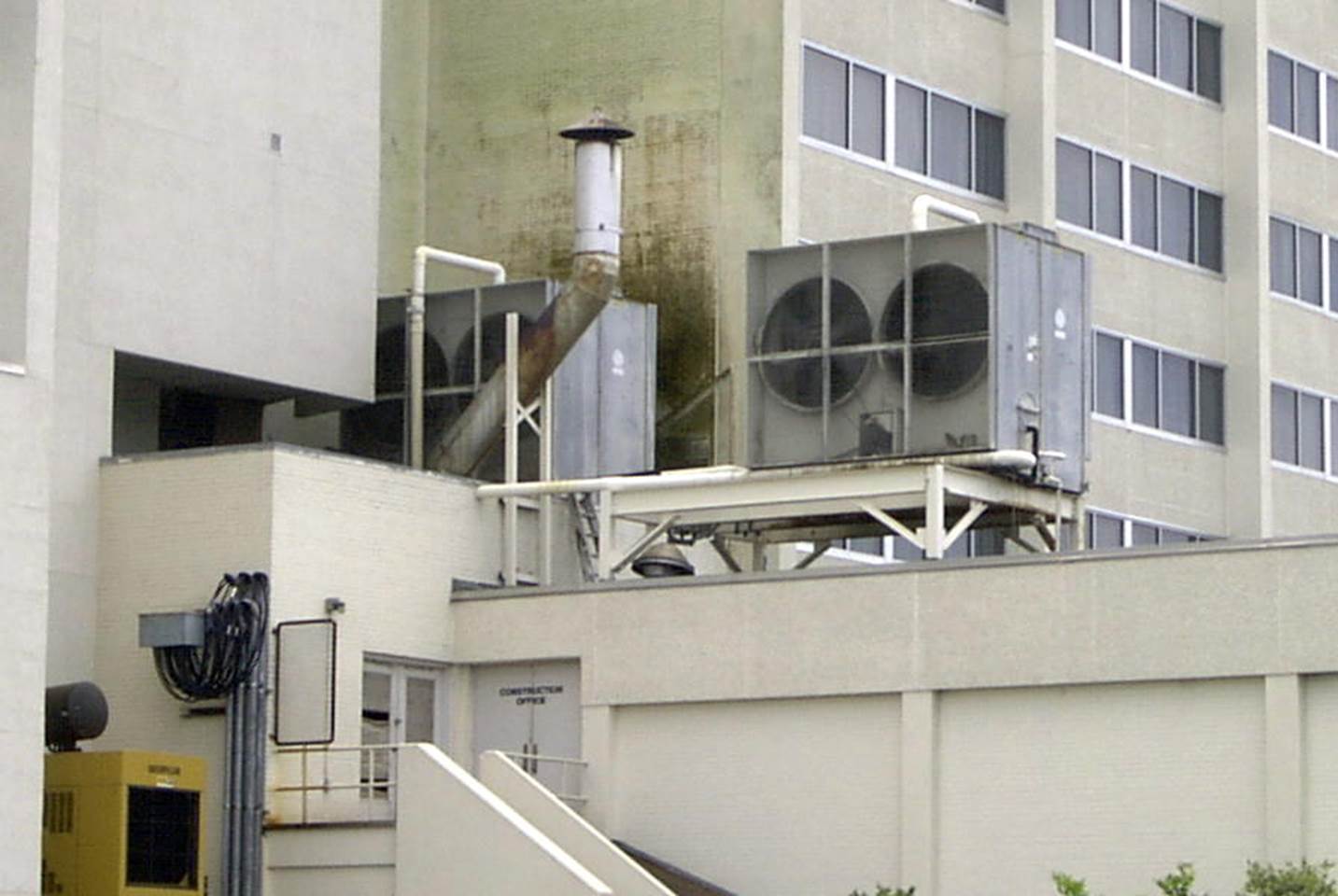Cooling Tower and Condenser Water Design Part 4: Cooling Tower Air Flow Considerations
/By Chad Edmondson
Cooling towers are one of the most effective strategies for reduction of cooling load – at least as long as you don’t invade their personal space.
Cooling towers are far more likely to do their thing and do it well when they’ve got some room to breathe, preferably with an unobstructed view. Bad things happen when you crowd a cooling tower with walls or solid enclosures – some of which are painfully obvious in the above photograph showing two cooling towers installed atop a hotel.
The cooling tower on the right was actually operating fine, but the one on the left was not achieving its rated capacity. Besides not evaporating enough water to maintain condensing design water temperatures, it was causing mold to grow on an adjacent building wall.
The problem was the restricted airflow around the cooling tower fan. In this case, it was a triple whammy. Airflow was blocked at fan level by building walls on two sides of the cooling tower; in addition, a natural gas boiler exhaust vent pipe from the hotel laundry was located right next to the cooling tower. The combination of combustion exhaust with a steady supply of warm moist air created a highly corrosive environment. The factors resulted in elevated wet bulb temperatures that were often several degrees higher than the design 78°F wet bulb for North Carolina. Often times this warm moist air simply circulated around the cooling tower, depending on the prevailing winds, creating the damp conditions next to the building that led to mold.
The air around the cooling tower was already too saturated with moisture to effectively evaporate water. This led to another problem: elevated condenser water temperatures. Instead of cooling the condenser water down from 95°F to 85°F as it was designed to do, the cooling tower was falling short of the supply temperature to the chiller. As we learned in Part 1 of this blog, higher temperatures result in higher pressures when it comes to the refrigeration loop. Thus, at higher temperatures the compressor pump has to work extra hard to compress the liquid into gas. That’s more BTUs – all because one of the cooling towers was installed too close to a couple of walls.
Cooling Tower Clearances
How much room does a cooling tower need? It depends on the cooling tower, of course, but there is always a minimum clearance that must be observed if you want your cooling tower to operate at the rated capacity. Chart A shows the minimum clearances for a given cooling tower. Cooling tower vendors should be able to provide you with this information.
Chart A
Also, the fan discharge cylinder of the cooling tower fan should be level with or higher than any adjacent walls that happen to be near the clearance boundary.
“Oh but it’s ugly!” some might say. “The owner wants it hidden from view!”
It’s true--not everyone appreciates the inner beauty of a cooling tower even if they appreciate the savings. If the owner or developer you are working with insists that a cooling tower must be kept from plain site just be sure to consult with the cooling tower vendor on what your options are in terms “hiding” the tower without restricting air flow.
For more information about cooling tower and condenser water design, as well as many other hydronic HVAC topics, be sure to check out our online training video series!




